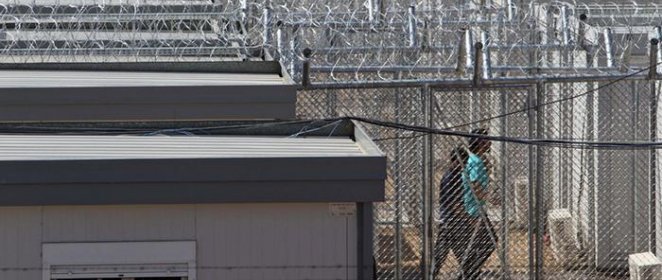A new report published by Aitima today documents developments in relation to detention of asylum seekers and irregular migrants in Greece. The report compiles findings of detention monitoring conducted by Aitima from September 2015 to September 2016.
The report contains detailed information obtained from visits to the pre-removal detention centres of Amygdaleza, Petrou Ralli, Corinth, Paranesti, Xanthi and Orestiada, as well as the special detention centres at Athens International Airport, the detention unit for women in Elliniko and unaccompanied children in Amygdaleza. Conditions in a number of police stations including Drapetsona, Thessaloniki, Mydgonia and Nafplio are also assessed.
Several of the detention facilities visited by Aitima, including the pre-removal centres of Orestiada in Northern Greece and Petrou Ralli in Attica, as well as police stations of Drapetsona, Nafplio, Agios Athanasios and Mygdonia, are spaces falling below the CPT standards for detention of non-nationals. In addition, issues related to the maintenance of facilities, health care and provision of information are also reported.
Alongside conditions of detention, the report documents problems in the assessment of legality of detention for removal purposes or during an asylum procedure. While detention orders are generally issued without individualised assessment of the person’s circumstances, detention is systematically applied based on a dubious application of public order grounds, and pre-removal detention has been applied against persons whose return may not compatible with the non-refoulement principle, such as Iranian nationals.
On the other hand, asylum seekers who wish to apply for asylum have not faced significant delays in having their intention to apply registered by the police, but face delays in lodging applications with the Asylum Service. Waiting periods ranging from one to three months were reported at the Asylum Unit of Amygdaleza, while delays were witnessed in respect of the Regional Asylum Office of Patras. Moreover, the role entrusted to the Asylum Service with regard to determining detention of asylum seekers is reduced in practice, as recommendations on the continuation of detention employ standard wording, deferring to the assessment of alternatives to detention by the police.1
For more information, see:
- Aitima, Forgotten: Administratively detained irregular migrants and asylum seekers, October 2016.
- Greek Council for Refugees, Implementing alternatives to detention in Greece, February 2016.
- AIDA, Country Report Greece: Fourth Update, November 2015.
* This article was first published in the Asylum Information Database (AIDA) website
Photo: Amygdaleza pre-removal centre. Credit: w2eu.net

